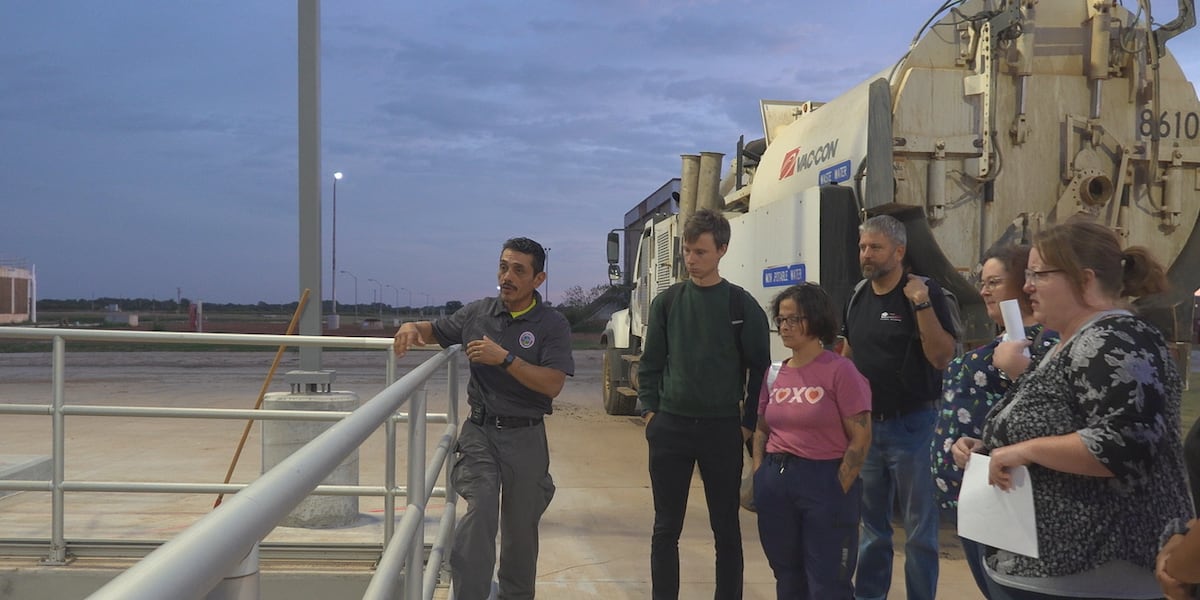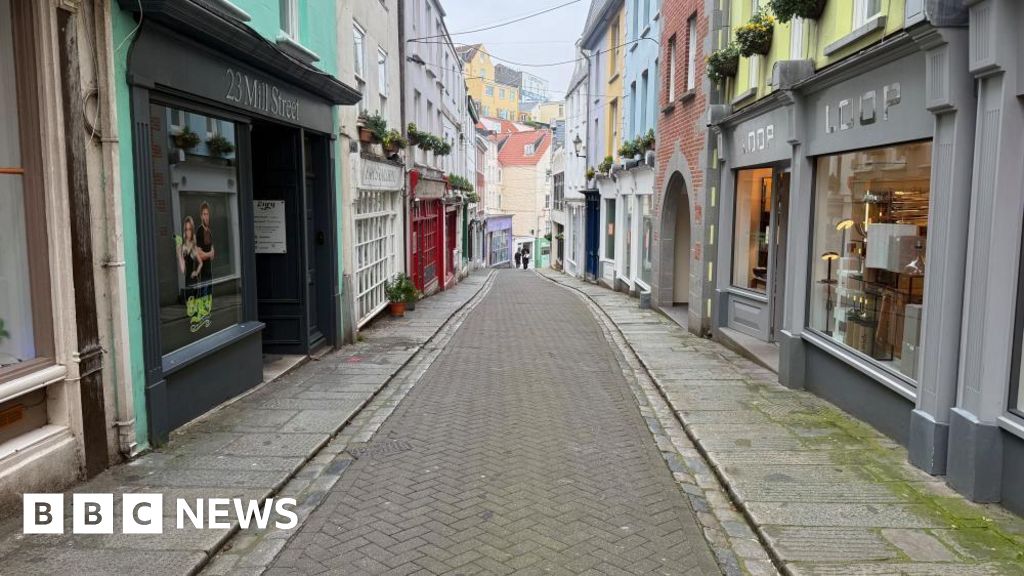Residents learn about Public Utilities during week 12 of Lawton Citizens’ Academy – KSWO 7News

Report on Lawton’s Wastewater Management and Infrastructure Upgrades in Alignment with Sustainable Development Goals
Executive Summary
This report details the operational advancements and infrastructure projects undertaken by the City of Lawton’s Public Utilities, with a specific focus on the wastewater treatment system. The initiatives demonstrate a significant commitment to achieving several United Nations Sustainable Development Goals (SDGs), particularly SDG 6 (Clean Water and Sanitation), SDG 9 (Industry, Innovation, and Infrastructure), SDG 11 (Sustainable Cities and Communities), and SDG 12 (Responsible Consumption and Production). The city employs innovative biological treatment methods, has substantially upgraded its water and sewer infrastructure, and actively engages the community to foster sustainable practices.
Advancements in Water Treatment and Sanitation (SDG 6)
Lawton’s approach to wastewater management directly supports the targets of SDG 6, which aims to ensure the availability and sustainable management of water and sanitation for all.
Biological Wastewater Treatment: A Sustainable Approach
- The primary treatment process is a biological system that utilizes microbes to break down waste, eliminating the need for extensive chemical use.
- This method aligns with SDG Target 6.3 by improving water quality through the reduction of pollution and the effective treatment of wastewater before its final discharge.
- The system represents a sustainable and environmentally conscious solution for urban sanitation.
Initial Screening and Waste Reduction
- The treatment process begins with the mechanical removal of non-biodegradable impurities, such as diapers, rags, and other hygiene products improperly flushed down toilets.
- This initial stage is critical for the efficiency of the subsequent biological processes and underscores the importance of public awareness regarding proper waste disposal.
Infrastructure Modernization for a Resilient City (SDG 9 & SDG 11)
The city has made substantial investments in its infrastructure, reflecting the principles of SDG 9, which focuses on building resilient infrastructure, and SDG 11, which aims to make cities inclusive, safe, resilient, and sustainable.
Key Infrastructure Improvements
- Water Main Breaks: Reduced from 850 per year to 384 per year, a reduction of over 50%.
- Sewer Mains: Over 50 miles of sewer mains have been replaced throughout the city.
- Pumping Capacity: Lift station wet wells are capable of pumping between 12 to 15 million gallons of wastewater per day to the treatment facility.
Impact on Urban Sustainability
- These upgrades enhance the resilience and reliability of essential services, directly contributing to SDG 9.
- By preventing system failures and ensuring access to basic services, the projects support SDG Target 11.1.
- The proactive infrastructure maintenance is vital for preventing urban deterioration and ensuring the long-term sustainability of the City of Lawton.
Promoting Community Engagement and Responsible Consumption (SDG 11 & SDG 12)
Public education is a cornerstone of Lawton’s strategy, fostering a partnership with citizens to achieve sustainability goals related to community planning and consumption patterns.
The Role of the Citizens’ Academy
- The citizens’ academy program offers residents an opportunity to learn about the inner workings of city operations, including public utilities.
- This initiative promotes participatory and integrated urban management, aligning with SDG Target 11.3.
- It empowers citizens with knowledge, giving them a greater appreciation for the complexity and importance of municipal services.
Fostering Responsible Consumption Habits
- Education from the program has led to increased public consciousness about responsible disposal practices.
- Residents report a greater commitment to avoiding the disposal of fats, oils, and other harmful items down the drain.
- This behavioral change directly supports SDG 12 by encouraging the reduction of waste generation at its source, thereby lessening the burden on treatment facilities.
Analysis of Sustainable Development Goals in the Article
1. Which SDGs are addressed or connected to the issues highlighted in the article?
-
SDG 6: Clean Water and Sanitation
- The article’s primary focus is on the City of Lawton’s wastewater treatment plant, the process of cleaning water, and the management of sanitation infrastructure. It discusses how wastewater is treated biologically and the importance of discharging clean water.
-
SDG 9: Industry, Innovation and Infrastructure
- The text highlights significant infrastructure projects, including upgrades to the wastewater treatment facility, the replacement of over 50 miles of sewer mains, and water line replacements. These actions directly relate to developing reliable, sustainable, and resilient infrastructure.
-
SDG 11: Sustainable Cities and Communities
- The improvements to the water and sewer systems are essential for the long-term sustainability and health of the City of Lawton. The article also mentions a “citizens’ academy,” which promotes community engagement and education in urban management, contributing to a more inclusive and sustainable community.
2. What specific targets under those SDGs can be identified based on the article’s content?
-
SDG 6: Clean Water and Sanitation
- Target 6.3: By 2030, improve water quality by reducing pollution… halving the proportion of untreated wastewater. The article describes the city’s biological wastewater treatment process, which aims to “remove most of the impurities” before the “final discharge,” directly addressing the goal of treating wastewater to improve water quality.
- Target 6.b: Support and strengthen the participation of local communities in improving water and sanitation management. The “citizens’ academy” program described in the article is a direct example of this, as it educates residents like Neal Kirmer about the city’s water systems and encourages them to be “more conscious of the items I put down the drain.”
-
SDG 9: Industry, Innovation and Infrastructure
- Target 9.1: Develop quality, reliable, sustainable and resilient infrastructure… to support economic development and human well-being. The article details the city’s efforts to achieve this through “water line replacement projects” and the replacement of “over 50 miles of sewer mains,” which have successfully reduced water main breaks and improved the system’s reliability.
-
SDG 11: Sustainable Cities and Communities
- Target 11.6: By 2030, reduce the adverse per capita environmental impact of cities, including by paying special attention to… municipal and other waste management. The effective management and treatment of “12 to 15 million gallons of wastewater a day” is a critical component of reducing the city’s environmental footprint.
3. Are there any indicators mentioned or implied in the article that can be used to measure progress towards the identified targets?
-
For SDG 6 (Clean Water and Sanitation)
- Implied Indicator for Target 6.3: Volume of wastewater safely treated. The article mentions that one lift station pump handles “over 12 to 15 million gallons of wastewater a day,” which is then sent through a new treatment facility. This figure represents the volume of water undergoing the treatment process.
-
For SDG 9 (Industry, Innovation and Infrastructure)
- Direct Indicator for Target 9.1: Reduction in service disruptions. The article provides a specific metric: “we’ve reduced water main breaks from 850 per year to 384.” This is a direct indicator of increased infrastructure reliability.
- Direct Indicator for Target 9.1: Length of infrastructure upgraded. The article states that the city has “replaced over 50 miles of sewer mains,” which serves as a quantitative measure of infrastructure development.
4. SDGs, Targets and Indicators Table
| SDGs | Targets | Indicators |
|---|---|---|
| SDG 6: Clean Water and Sanitation | Target 6.3: Improve water quality by increasing the proportion of treated wastewater. | Volume of wastewater treated daily (mentioned as “12 to 15 million gallons of wastewater a day”). |
| Target 6.b: Support and strengthen the participation of local communities in improving water and sanitation management. | Existence of a “citizens’ academy” to educate residents on water and sanitation systems. | |
| SDG 9: Industry, Innovation and Infrastructure | Target 9.1: Develop quality, reliable, sustainable and resilient infrastructure. |
|
| SDG 11: Sustainable Cities and Communities | Target 11.6: Reduce the adverse per capita environmental impact of cities, including waste management. | Operation of a biological wastewater treatment plant to manage the city’s waste. |
Source: kswo.com
What is Your Reaction?
 Like
0
Like
0
 Dislike
0
Dislike
0
 Love
0
Love
0
 Funny
0
Funny
0
 Angry
0
Angry
0
 Sad
0
Sad
0
 Wow
0
Wow
0
















































/environment-climate-change-and-health-(ech)/water-sanitation-hygiene-and-health-(wsh)/landfill-tuvalu-36092.tmb-1200v.jpg?sfvrsn=5c21fe40_1#)

.jpg.webp?itok=0ZsAnae9#)

























